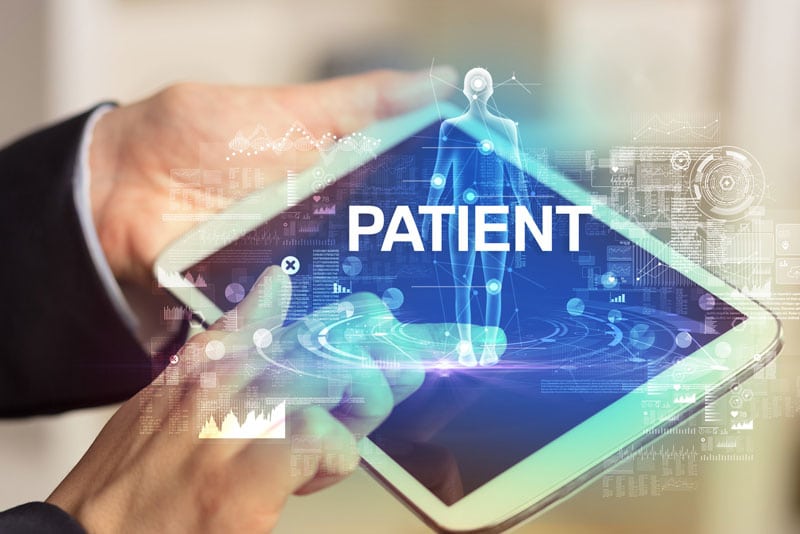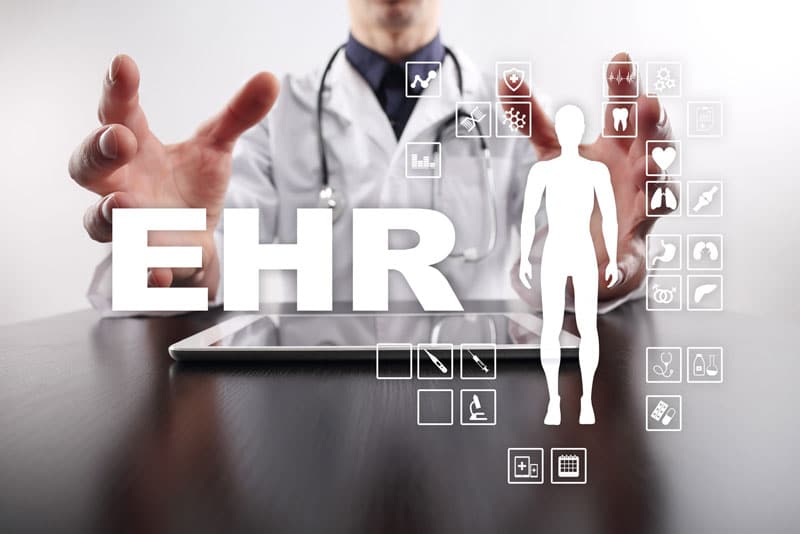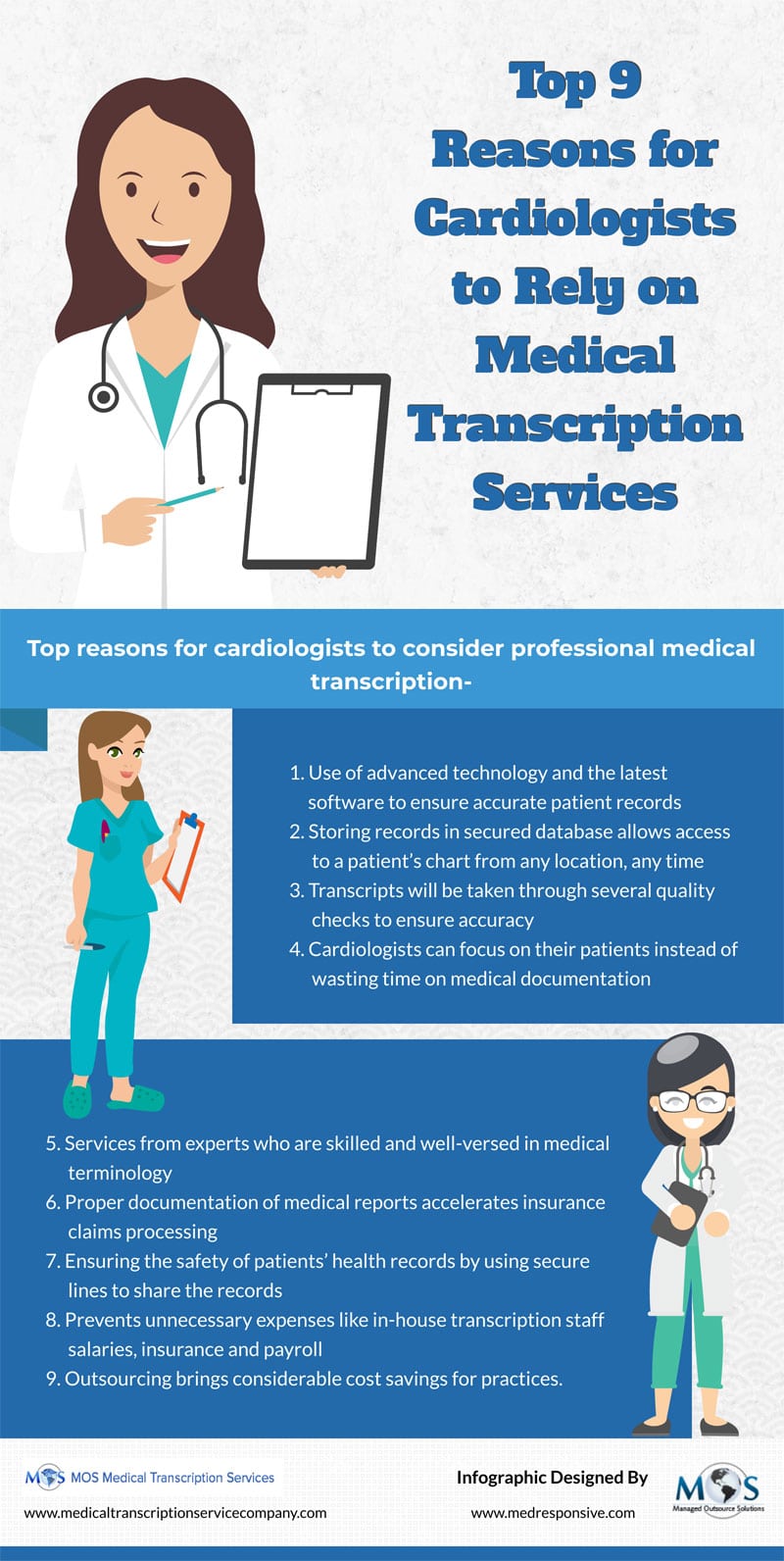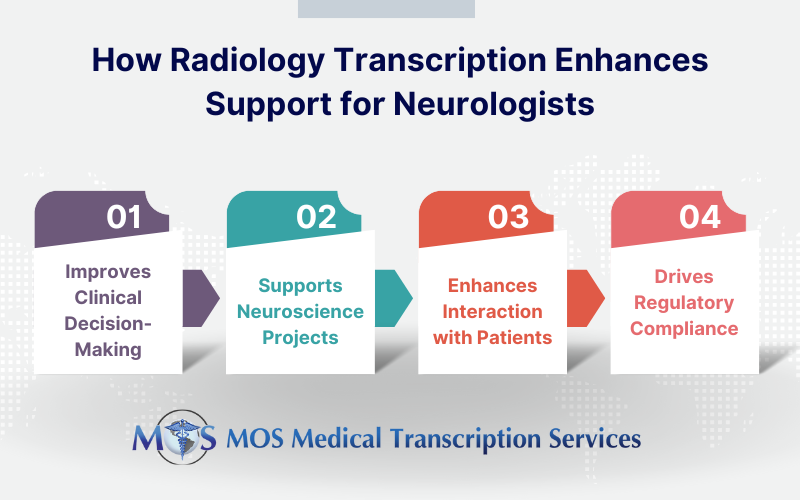
The Electronic Health Record (EHR) stores patient health information in digital format and provides physicians and other authorized users with the medical and treatment history of the patient. EHR adoption rates in the US have been on the rise and up to 79.7% of office-based physicians have a certified EMR/EHR system, according to the Centers for Disease Control and Prevention (CDC). Physicians use the structured, point-and-click documentation templates within the EHR to capture patient data at the point of care and rely on medical transcription services to document narrative dictation. EHRs are designed to improve quality of care, improve patient safety, reduce risk of medical errors, and support effective communication between the physician and patient. However, recent studies found that variations in physicians’ EHR documentation practices could compromise patient care and safety.
EHRs provide the healthcare team with real time access to patients’ medical history, including diagnosis details, treatment plan and aftercare, allergies, lab test results, and more. They can improve workflow and streamline the healthcare process, but physicians find typing notes into the EHR a time-consuming task that takes attention away from patient care. This can also lead to errors in the health record due to the widespread use of auto-populated text.
One possible factor leading to EHR inefficiency is the variation in how physicians document patient data, according to a study published in the Journal of General Internal Medicine in 2019. The study used data from a national ambulatory EHR vendor to measure physician-to-physician variation for 15 categories of clinical documentation.
Commercial EHR systems offer several options to meet different preferences on how information is recorded for an identical patient in the EHR. For example, during a patient exam, a problem or diagnosis can be documented in the review of systems, the problem list, the assessment and diagnosis, or in all three categories, noted the authors.
The findings of the study are as follows:
- Differences in the content, structure, or location of patient information in the EHR depends on factors such as user preferences, drive documentation decisions, and other penchants, rather than the differences in patients’ clinical status.
- There was substantial variation in the completion of documentation for 5 clinical documentation categories.
- There were different documentation styles across physicians in the same practice.
- These variations led to extra effort by physicians to find important information in the chart and entering the same information multiple times.
- Most respondents said that variation in EHR documentation was due to “idiosyncratic” physician choices, enabled by the multiple options available in the EHR to document each category of information.
The reasons for the variation documentation behaviors included lack of training, training on fast moving video (leaving little time for questions) instead of in person, and differences in how physicians viewed templates, with some providers preferring to use free-text fields instead of structured fields.
Documentation driven by individual preferences can create EHR inefficiencies and risk patient harm due to missed or misinterpreted information, said the study authors. “Our results revealed that such variation jeopardizes the efficient and possibly safe delivery of care,” they wrote.
Another study, also published in 2019, also looked into the veracity of physician documentation within EHR. Emergency department evaluation and management service standards comprise 7 elements, history, examination, medical decision-making, counseling, coordination of care, nature of presenting concern, and time. Of these, the first 3 are considered key factors, noted the study. When it comes to emergency physician documentation, elements such as the review of systems (ROS) and the physical examination (PE) were more likely to have errors due to the extensive use of auto-populated text.
The researchers found the EHR data did not always correctly reflect the level of care provided. The efficiency of EHRs depends greatly on the data elicited at the bedside and recorded in system by health care professionals. Therefore, it is critical that that clinicians document care provided correctly in the medical record.
The efficiency of EHRs depends on the quality of data they contain. Putting documentation responsibilities on physicians can lead to errors and inconsistencies in EHR data and cause problems for physicians, patients and the entire healthcare system. Outsourcing medical transcription are a practical option to ensure accurate, clean medical records so that patients receive the best possible care.









